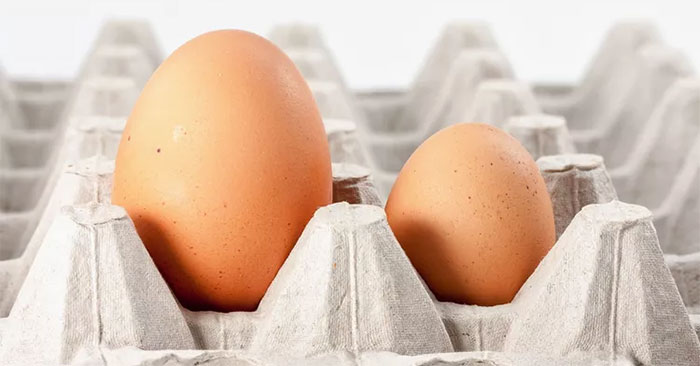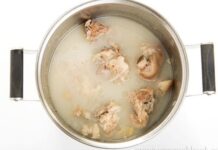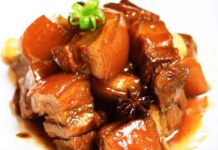Is Bigger Better? The Great Chicken Egg Debate
Chicken eggs come in a variety of sizes, leaving consumers wondering if bigger eggs are more nutritious and tasty. Let’s explore the facts and find an answer.

Scientific research has revealed that large and small eggs provide equal amounts of protein and nutrients. However, there is a subtle difference in taste.
Typically, eggs from free-range chickens are smaller and have thinner whites, with yolks that are richer and more flavorful during cooking. On the other hand, industrial chicken eggs are larger, with thicker whites, and the yolks are less aromatic when cooked.
According to the United States Department of Agriculture, the nutritional value of large or small eggs, whether from industrial or free-range chickens, is the same. The only difference between eggs of varying sizes lies in their flavor and color.
Large eggs typically come from older hens and have a higher yolk-to-white ratio, making them ideal for dishes where the yolk is the star, like fried eggs or deviled eggs. They also work well for baking, as they can add richness and moisture to cakes and cookies.
On the other hand, small eggs, also known as pullet eggs, come from younger hens and tend to have a lower yolk-to-white ratio. They are perfect for hard-boiling as they can be peeled more easily. Small eggs are also a great choice if you’re watching your cholesterol intake, as they have slightly lower cholesterol levels compared to large eggs.
A large egg typically contains around 70 calories, 6 grams of protein, and varying amounts of vitamins and minerals, including vitamin B12, riboflavin, selenium, and choline. A small egg provides similar nutrients but in slightly smaller amounts due to its smaller size.
However, if you’re making something like a meringue or angel food cake, where the whites are the star, opting for small eggs can give you more whites per volume, resulting in a lighter and airier final product.
In most cases, recipes are written with large eggs in mind, so using large eggs as a default is usually a safe bet. But don’t be afraid to experiment with different sizes to find what works best for your taste preferences and specific recipes.
For example, if a dozen large eggs costs $2.50, and a dozen small eggs costs $2.00, the large eggs might seem more expensive at first glance. But when you calculate the cost per gram, both sizes typically fall within a similar price range.
Additionally, purchasing farm-fresh eggs supports local farmers and sustainable agriculture. You also have the opportunity to learn about the farming practices and the living conditions of the hens, ensuring that the eggs you’re consuming are of the highest quality and come from happy, healthy hens.
Eggs’>Miracle Drug Discovered in (Cheap) 1/2 Quail Eggs
Making an Impact on the Taste: Comparison of Stir-Frying Ramen Noodles with or without Seasoning Packet Added First
 Taste: Comparison of Stir-Frying Ramen Noodles with or without Seasoning Packet Added First’>
Taste: Comparison of Stir-Frying Ramen Noodles with or without Seasoning Packet Added First’>From school cafeterias to office lunchrooms, shrimp noodle dishes are a familiar sight for many of us – especially students and busy professionals.






































